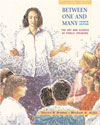 |  Between One and Many: The Art and Science of Public Speaking, 4/e Steven R. Brydon,
California State University, Chico
Michael D. Scott,
California State University, Chico
Using Media in Your Speech
SummaryProperly used, presentational media can make the difference
between a successful speech and a failure. Improperly used, they can undermine
your purpose. Remember: - Avoid relying too much on presentational media, cramming too much information
on a single hard-to-see visual, and using the wrong type of presentational
medium to achieve your purpose.
- Think of presentational media as extensions of your senses, using them as
a complement to speech, as visual illustrators of speech, as regulators of
speech, and as emblematic speech.
- Use presentational media appropriately, matching a medium with its best
possible purpose.
- Consider all of the possibilities, including actual objects, models, audio,
video, and computer-generated slides.
- Match content with the appropriate medium, for example, using visual media
such as pie charts and bar graphs to show statistical data.
- Keep presentational media simple, visible, easy to read, and colorful.
- Give the audience at least 10 seconds to process presentational media.
- And never forget that presentational media may complement your speech, but
they can never take your place or achieve your purpose and goals.
|
|



 2003 McGraw-Hill Higher Education
2003 McGraw-Hill Higher Education